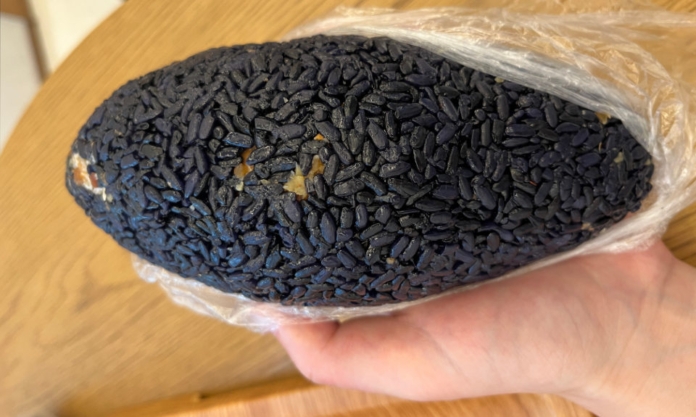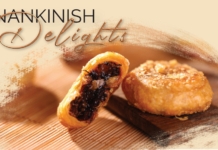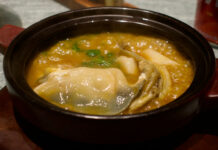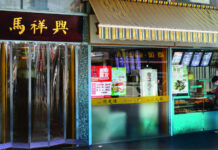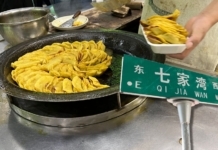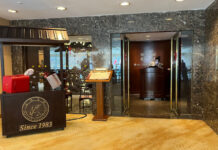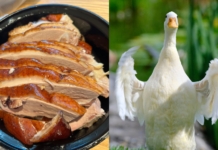Over the past year or two, some of the fanciest coffee shops, bars and bistros have mushroomed around the intersection of Wangfu Da Jie (王府大街) and Nantai Xiang (南台巷). The Sauce, Wine Thieves, Bitter Brew, Southern Trip, Staff Only, Cherry Bomb, Y&T… the list could go longer. If you have been following The Nanjinger, chances are that many of the names sound familiar to you. But have you ever walked around that area early in the morning, like 08:00?
“What for?”, You might wonder. The time is indeed too early for the bars or even the coffee shops to be open. However, if you do go there that early, you would find many people queuing in front of a small eatery right across the street from The Sauce. What makes them willing to stand in a long queue even on a busy weekday morning? The answer is both simple and obvious; breakfast.
More specifically, they queue for a type of rice roll which is a classic breakfast food in the Lower Yangtze (Jiangnan) region. The name is “zhengfan” (蒸饭; steamed rice) in Nanjing, but it is more commonly known as “cifantuan” (糍饭团; sticky rice roll) in Southern Jiangsu and Shanghai. Simply put, this is a hand-sized rice ball stuffed with deep-fried dough (油条; youtiao). If that is hard to picture, think about a lightly salted doughnut stick wrapped in a sushi roll. Carbs wrapped in carbs, I know, but that should not seem too surprising when you come to a land that has been so populous and agriculture-dependent throughout history.
As its Nanjing name suggests, zhengfan is made of steamed rice, which is firmer than boiled rice as the grains absorb less water while cooking. In addition, glutinous rice (a.k.a. sticky rice) is used to make it even denser and chewier to the bite.
The seemingly plain surface contrasts with a mixture of flavours and textures hidden underneath. The major part of the filling is youtiao, the deep-fried, aerated dough stick which is arguably the most widely loved breakfast item in China. You can have it in your rice roll as how it normally is: crispy on the outside, light and soft on the inside. Alternatively, you can ask for a crunchier type, which is fried for a longer time until the dough becomes crispy throughout.

Other ingredients are used to complement the youtiao and different vendors feature their own combinations. These are traditionally categorised as savoury or sweet; a universal breakfast debate, of course. The savoury contains a variety of pickled vegetables, whereas the sweet is enriched with a mixture of sugar, ground black sesame, and sometimes crushed peanuts. You may have already picked your side, but I always ask for both the savoury and sweet ingredients in the same roll. That, in my opinion, is the secret to extra deliciousness, with usually no extra cost.
This type of rice roll was introduced to Hong Kong and Taiwan during the first half of the 20th century by immigrants from Shanghai. The Taiwan variant has been recently re-shaped in mainland China, featuring a wider range of fillings such as pork floss, eggs and grilled meat. Innovative rice rolls are now widely available in convenient stores and even KFC, whereas the traditional type is usually found with pavement-based breakfast vendors who disappear by 10:00.
All that said, I was surprised at how many people were coming to buy zhengfan from this small eatery called “Fangpo” (芳婆) on Wangfu Da Jie. Fangpo is in fact a traditional dessert shop that has been serving the city since the late 1970s. Their baby taro soup and sweet rice wine are perfect afternoon refreshments for me on a shopping day in Xinjiekou, but I had never had rice rolls there. How do theirs differ from other breakfast vendors? Are they worth the long wait?
At 08:02 on a Friday, I finally found myself standing at the end of the queue. Fangpo opens every day from 04:00 and the rice rolls tend to sell out in the first 5 hours. I was glad that I made it. Compared to my 17-kilometre journey from home, the 10-minute wait in the queue was nothing. The seating area was closed due to COVID, but the store was extremely busy nonetheless. Four women standing behind the front counter were wrapping rice rolls at full speed, while other staff members worked the rear of the store.
A seasonal type of rice called “wufan” (乌饭; black rice) is used to make the rolls. Unlike black rice or purple rice, wufan is essentially white glutinous rice but gains its dark colour from the sap of a special kind of tree leaf, available only from April to October. Most people in Nanjing prefer wufan over white rice as it comes with a subtle herbal scent.
Each rice roll is made to order. Approaching the front of the queue, I enjoyed watching warm rice being scooped from a large bucket, weighed on an old-fashioned scale, spread on a cotton cloth, and rolled up tightly with the customised filling into a rugby-shaped ball. That, to me, was a promising scene compared to some places where sushi mats are used.
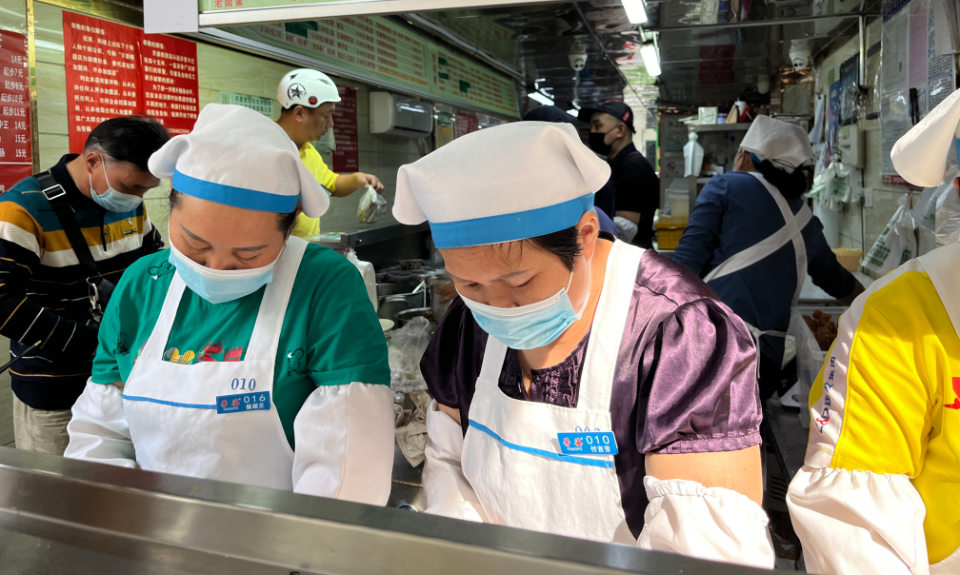
Now it’s time to think about the filling. In addition to the traditional savoury and sweet options, along with two types of youtiao, there are also pork floss, hard-boiled eggs marinated in soy sauce, and sausage links from which to choose. A grey-haired man in front of me seemed to be irritated by the unconventional options. When kindly asked by the cashier whether he would like any pork floss or egg in his “savoury” roll, he replied with an impatient tone, “Just ‘the savoury’, please!”, as if a simple mention of other options was enough to defile the purity of his roll.
To make the most of my trip, I ordered two different rolls to cover all the ingredients, except the sausage, and ate them immediately before they became cold and soggy. An apparent advantage of zhengfan as breakfast is its portability. 20 years ago it was common to see kids eating zhengfan on their parents’ bicycles as they dashed to school. Now in 2022, it seems to me more of a luxury experience to enjoy a rice roll while walking the city centre’s busy streets.
These were certainly some high-quality zhengfan. The rice and the flavours were spot on. The marinated egg was outstanding, but the youtiao could have been better. Worth the hype? I’m not so sure, because I can think of some other places that make zhengfan as good as these, but with shorter queues and lower prices. One of them is even in the vicinity of Fangpo. It is a popup stall in front of a Xinjiang lamb pilaf restaurant (the lamb pilaf is good, by the way), run by an elderly couple. Further information is listed below for a rice roll competition should you be in need of extra carbs.
On second thoughts, the hype is perhaps well-deserved. Like in many other Chinese cities, breakfast in Nanjing used to be widely served at street stalls and food carts, but their numbers have declined significantly due to strict regulations, especially in the Xinjiekou area. It is almost inevitable to wait in line these days in order to get some authentic local breakfast anywhere in the city.
After all, the best breakfast does not need to be out-of-this-world good. To many people, it simply means the most comforting way to start the day, be it Philadelphia cream cheese spread on an everday bagel, or a zhengfan rice roll filled with crunchy youtiao and pickled vegetables.
Fangpo Rice Cake Shop 芳婆糕团店, 50 Wangfu Dajie 王府大街 50号. Hours: 04:00-19:00, Monday to Sunday.
Zhang Qingying Wufan 张庆英乌饭, 8 Houjia Qiao 侯家桥 8号. Hours: 06:00-09:30, Monday to Sunday.


